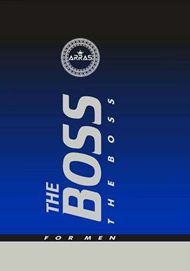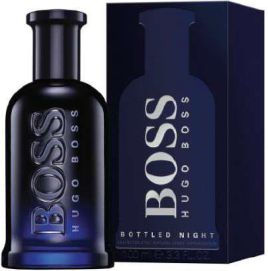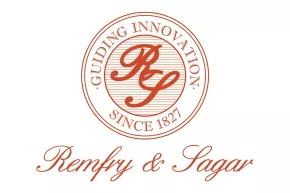On the issue of copyright and trademark rights over a label (mis)used in connection with perfumes, a recent judgement of the Delhi High Court - Hugo BOSS Trademark Management GmbH and Co. KG v. Sandeep Arora trading as Arras The BOSS & Ors [C.O.(COMM.IPD-CR) 6/2023, I.As. 12778/2023 & 12779/2023] – shines the spotlight on the linkages between the Indian Copyright Office and Trademark Registry and how the effective protection of intellectual property (IP) rights in the country demands due care in the implementation of statutory safeguards
Hugo Boss, often styled as BOSS, is a German luxury fashion house that sells clothing, accessories, footwear, and fragrances. In the present case, it filed a copyright cancellation petition seeking removal of a copyright registration obtained by the respondents - Sandeep Arora trading as Arras The BOSS & Ors - for an artistic work titled 'ARRAS THE BOSS' – a label to be used on perfume bottles where 'BOSS' was the most dominant element by far and stylised in a manner very similar to Hugo Boss' proprietary style used for perfumes. Hugo Boss is the registered proprietor of several BOSS formative marks dating back as early as 1923 which have been used extensively. Further, the 'HUGO BOSS' mark was adopted in 1984 for the purpose of marketing and selling fragrance and perfumes and its mark 'BOSS' is a registered trademark in several countries including in India. It accused the respondents of being habitual infringers of trademark rights. It was pointed out before the court that the respondents had also filed an application for registration of the mark BOSS as a trademark, which had been rightly refused by the Registrar of Trade Marks citing Hugo Boss' 'BOSS' trademark as a prior conflicting mark.
Under the Copyright Act, 1957, to ensure that copyright applications for artistic works (such as labels etc.), used or capable of being used for any goods and services, do not conflict with existing trademark applications and registrations, there is a requirement to seek a No Objection Certificate from the Trade Marks Registry before an application is filed at the Copyright Office. Although copyright and trademark rights are conferred under different statutes, original artistic works can overlap with label trademarks. This requirement of obtaining a No Objection Certificate helps prevent copying of label marks and taking unfair advantage of obtaining rights under a different statute and a separate IP office.
Interestingly, the respondents in this case did obtain a No Objection Certificate, and were technically well within their rights to file for the copyright application under question. Also, the Copyright Office was under no statutory obligation to get into the question of a copyright application before it being similar to any existing labels trademarks. Notably, though the Copyright Act, 1957, does allow for filing of objections within 30 days of the date of filing of a copyright application, this is a seldom used mechanism as the Copyright Office does not publish a journal featuring labels and details of all artistic work applications filed with it. This may be contrasted with the Trade Marks Registry which publishes journals of all accepted trademark applications to give public notice to third parties who could choose to file oppositions following publication.
On locus, the High Court found that the petitioner Hugo Boss was a 'person aggrieved' owing to its common law and statutory rights in the trademark 'BOSS' and due to the fact that the rival parties were operating in the same trade of perfumes and fragrances. Further, it found that the 'substantial similarity' of the rival artistic works/labels was not much of a question as a visual comparison made it evident that registration of the artistic work would dilute and erode the rights of the petitioner in its mark. See the comparison of the rival label and trademark below:
| Arras The BOSS's artistic work | Hugo BOSS's label mark |
 |
 |
The artistic work not only consisted of the mark BOSS, but the colour scheme of the petitioner was substantially imitated as well. The court commented on how it was "inexplicable [that] the Trade Marks Registry issued a clear search report in respect of the [artistic] work, where clearly in respect of the respondents' trade mark application, the petitioner's marks were cited as conflicting". In the court's view, the search report [re copyright] was "rid with [procedural and substantive] inaccuracies and contrary to the Register of Trade Marks". Accordingly, it held the respondents' copyright registration as one "wrongly remaining on the Register of Copyright".
The respondents were also held to be "indulging in habitual copying of various well-known marks". Accordingly, the impugned copyright registration was expunged and cancelled from the Register of Copyright.
Irregularities such as the one discussed often stem from lack of transparency at the IP Office. Now that trademark records are digitised for the most part and a public search function is available, it is easy to discern where one stands in terms of trademark rights. However, online inspection of files is not provided at the Copyright Office and physical inspection of records remains a cumbersome task. That said, given the spotlight on IP rights in general, and in particular by the Indian government which emphasises the link with economic growth and has set aggressive targets for IP administrative reform, it is hoped that cases such as this one would be more the exception than the rule in the days ahead. Optimal implementation of statutory safeguards is a sine qua non for a robust IP ecosystem for not everyone has the resources of time and money to knock on the doors of a courtroom to seek relief against infringing filings and registrations.
The content of this article is intended to provide a general guide to the subject matter. Specialist advice should be sought about your specific circumstances.


